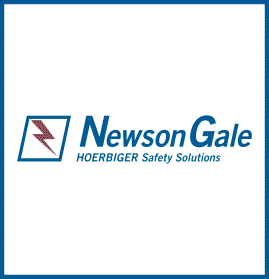U.S. freight railroads have implemented PTC on over 80% of required miles
At the end of 2018, the largest freight railroads in the U.S. were operating positive train control (PTC) across the vast majority – 83.2 percent – of the required Class I PTC route miles nationwide according to newly released data from the Association of American Railroads (AAR).
With this progress, the Class I railroads met the 2018 statutory requirements and are well on their way to meeting the final deadline for full implementation and validation, December 31, 2020. Over the next two years, the Class I railroads will focus on testing to ensure that PTC systems are fully interoperable and work seamlessly across operations as railroads regularly run across each other’s tracks.

“Each day, the freight railroads expand PTC operations, further reducing the risk of accidents on the nation’s rail network,” said AAR President and CEO Ian Jefferies. “By the end of 2018, the Class I railroads had installed and were operating PTC on the vast majority of their required networks, met all other statutory PTC requirements and remained on track to fully implement this critical safety technology by the final 2020 deadline. The railroads’ commitment to safety is unwavering, and this industry is proud of its accomplishments in this immense undertaking.”
As of December 31, 2018, the Class I railroads had invested $10.5bn in the development, installation and implementation of PTC and had the technology in operation across 44,695 miles of their 53,732 miles of PTC required track. All seven railroads also had 100 percent of the necessary wayside, back office and locomotive hardware installed; had all spectrum in place; and completed all necessary employee training as required by the law.
What is required by law?
PTC as mandated by the Rail Safety Improvement Act of 2008 (RSIA) must be designed to prevent four major types of train accidents:
- Train-to-train collisions.
- Derailments caused by excessive speed.
- Unauthorized incursions by trains into sections of track where maintenance activities are taking place.
- Movement of a train through a track switch left in the wrong position.
The statutory deadlines established by Congress required that by December 31, 2018 Class I railroads must have:
- All hardware installed.
- All radio spectrum acquired.
- Over 50 percent of PTC territory or route miles implemented.
- All required employee training completed.
Class I railroads that met the 2018 installation deadline could obtain an additional 24 months to test and ensure the system is fully interoperable. Interoperability means that the system works with any PTC-equipped locomotive running on any of the railroad tracks through the United States where PTC is required. By December 31, 2020, all Class I railroads must have:
- Testing completed.
- Full PTC implementation across the network.
Who are the Class I railroads?
The Class I freight railroads own the majority of mileage in the North American rail network and include:
- BNSF Railway Company
- Canadian National Railway Company (CN): US operations
- Canadian Pacific (CP): US Operations
- CSX Transportation, Inc.
- Kansas City Southern (KCS)
- Norfolk Southern Company (NS)
- Union Pacific Railroad (UP)
For more information visit www.aar.org
28th January 2019





















